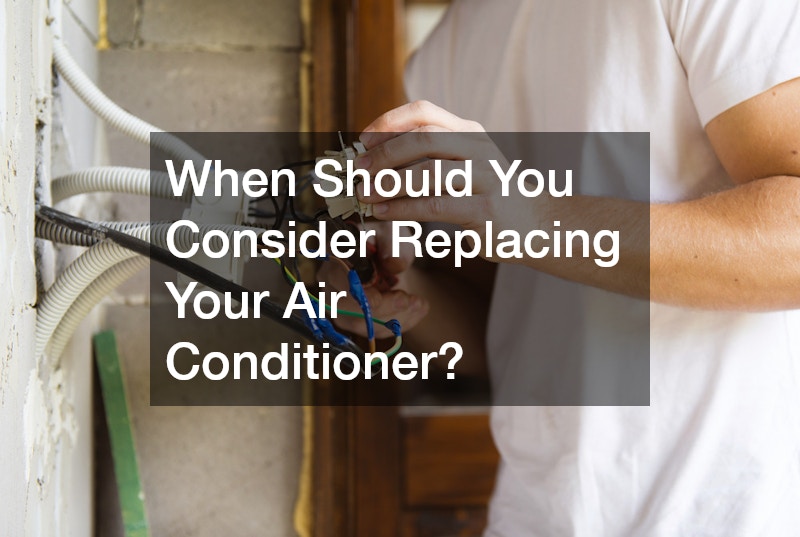In this article, we will explore the process of air conditioning repairs, addressing some of the most common questions and topics people have about maintaining and fixing air conditioning units. We aim to provide a comprehensive understanding of how air conditioning systems work, the common issues that arise, and the steps involved in repairing them.
1. How Does an Air Conditioning System Work?
1.1 Understanding the Components
Air conditioning systems consist of several crucial components, including the compressor, condenser, and evaporator. Each part plays a vital role in the overall functionality of the unit, ensuring it provides the desired cooling effect.
The compressor is responsible for pressurizing the refrigerant and propelling it through the system. This process enables the refrigeration cycle to effectively transfer heat and cool the environment.
Meanwhile, the condenser works to release absorbed heat to the outside air, while the evaporator removes warmth from the indoor air. Together, these components efficiently regulate temperature and humidity levels in buildings.
1.2 The Refrigeration Cycle
The refrigeration cycle is the cornerstone of how air conditioners function to produce cold air. This cycle involves the continuous circulation of refrigerant, which absorbs heat from the indoor environment and expels it outside.
Heat absorption occurs when the refrigerant enters the evaporator coils, changing from a liquid to a gas and drawing warmth from the air. This cooled air is then circulated back into the living spaces, providing a comfortable indoor climate.
Once the refrigerant becomes a gas, it is compressed and pressurized by the compressor, allowing it to release the absorbed heat through the condenser coils outside. This cycle repeats, consistently maintaining the desired indoor temperature.
2. What are Common Air Conditioning Problems?
2.1 Identifying Common Issues
Air conditioners frequently encounter issues such as refrigerant leaks, which can significantly impact their effectiveness. Additionally, electrical problems and poor airflow are also prevalent, leading to compromised cooling performance.
Refrigerant leaks often occur due to damaged or worn components, resulting in insufficient cooling output and increased energy consumption. Electrical issues may include faulty wiring or malfunctioning components, complicating system operations.
Poor airflow, on the other hand, can stem from clogged filters or obstructed ductwork, impeding the distribution of cooled air. Addressing these common problems is essential to maintain optimal air conditioner performance.
2.2 Diagnosing the Causes
Proper diagnosis is crucial to identifying the root causes of air conditioning problems. Professionals often utilize various methods and tools to accurately determine system malfunctions.
Technicians may employ infrared cameras, refrigerant gauges, and electrical multimeters to pinpoint specific issues. By precisely diagnosing the problems, effective repairs can be implemented, and future complications can be avoided.
Understanding the underlying causes of issues allows homeowners to take preventive measures, ensuring the longevity of their air conditioning systems. This proactive approach can lead to significant energy savings and improved system efficiency.
3. How Do You Perform Basic Air Conditioning Maintenance?
3.1 Regular Cleaning and Filter Replacement
Performing regular cleaning and replacing air filters is a fundamental aspect of air conditioning maintenance. Clean filters promote optimal airflow, enhancing the efficiency and effectiveness of the system.
Over time, dirt and debris accumulate in air filters, obstructing the passage of air and taxing the system. By frequently replacing or cleaning filters, homeowners can prevent potential clogs and extend the lifespan of their units.
This straightforward maintenance task not only improves air quality but also reduces the likelihood of encountering more severe issues down the line. Keeping ducts unobstructed is another essential step toward maintaining indoor air quality.
3.2 Seasonal Maintenance Tips
Seasonal maintenance is essential to ensure an air conditioning system’s optimal performance year-round. During springtime, cleaning the outdoor condenser unit and inspecting components for wear and tear can prevent major issues.
In the fall, adjusting system settings for cooler weather and inspecting ductwork can enhance system efficiency. Performing these checks, ideally before the cooling or heating seasons, can help in proactively identifying potential problems.
By adhering to regular and seasonal maintenance routines, homeowners can ensure their air conditioning systems remain reliable, reducing the chances of unexpected breakdowns. Additionally, this practice can contribute to significant energy savings.
4. What are the Steps in Professional AC Repairs?
4.1 Initial Assessment and Diagnosis
Professional AC repairs typically begin with a thorough initial assessment and diagnosis of the system. Technicians often start by examining the unit, listening to owner reports, and observing any visible signs of wear or damage.
During the diagnosis phase, technicians use specialized tools to measure refrigerant levels, check for leaks, and assess the performance of electrical components. Extensive testing helps pinpoint precise issues affecting efficiency.
4.2 Repair Techniques and Tools
Technicians employ a range of repair techniques and tools to resolve air conditioning issues. Common procedures include fixing refrigerant leaks, which require patching or replacing faulty tubing to restore optimal system performance.
Addressing electrical issues often involves repairing or replacing damaged wiring and improving connections between components. By utilizing precision tools, technicians can effectively resolve faults and restore the unit to full functionality.
5. When Should You Consider Replacing Your Air Conditioner?
5.1 Signs it’s Time for a Replacement
Knowing when to replace an aging air conditioner can prevent recurring expenses. Units that frequently break down, struggle to maintain desired temperatures, or necessitate constant repairs signify that replacement might be more cost-effective.
Older units, particularly those exceeding ten years, are typically less energy-efficient than newer models. By replacing outdated systems, homeowners can benefit from advanced technologies, lower energy costs, and improved comfort.
5.2 Cost Analysis of Repair vs Replacement
When deliberating between replacing or repairing an air conditioning unit, cost considerations play a significant role. Frequent repairs can accumulate costs over time, making replacement a more economical choice for long-term savings.
Calculating the cost of repair against replacement involves factoring in the efficiency improvements of newer models. New units, though more expensive initially, may offer rebates or operate with higher energy efficiency.
.
